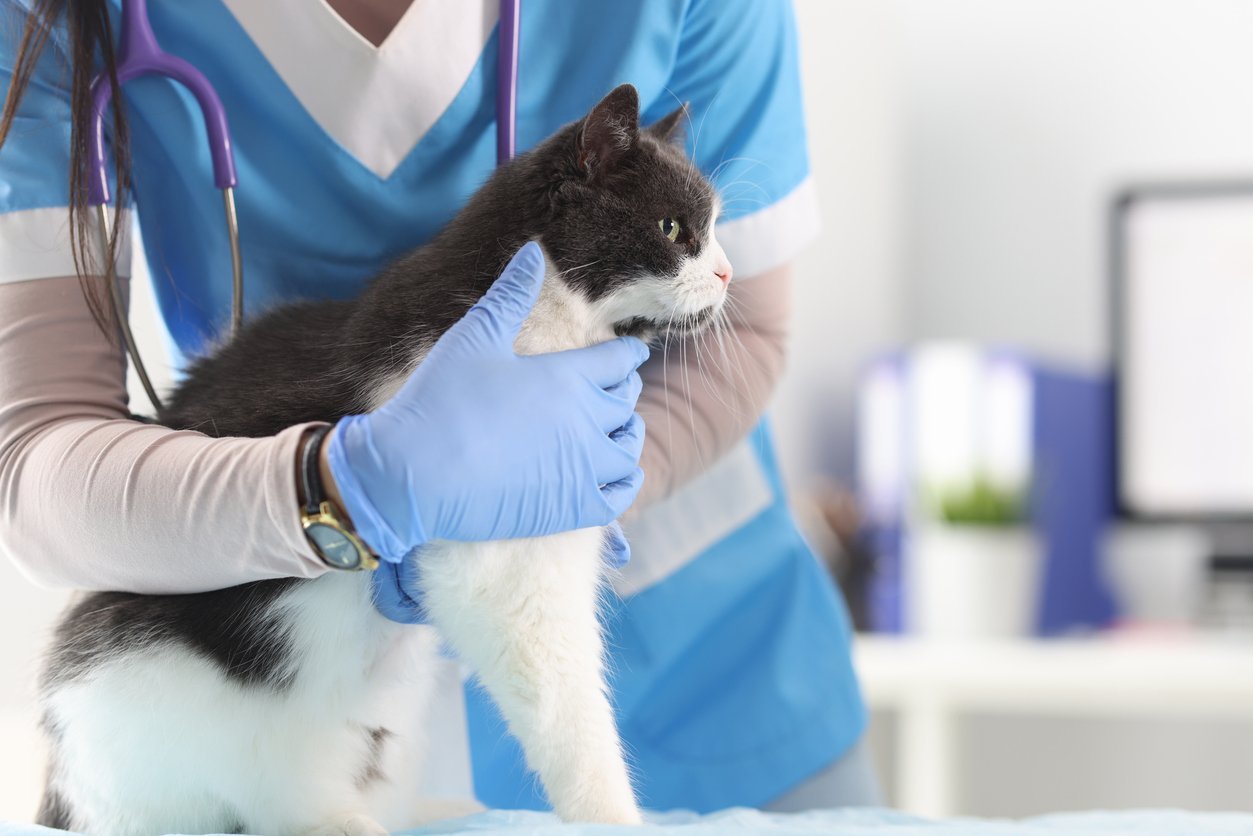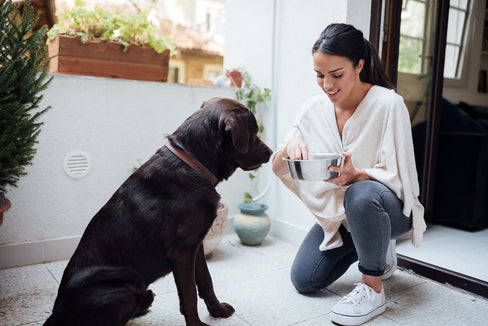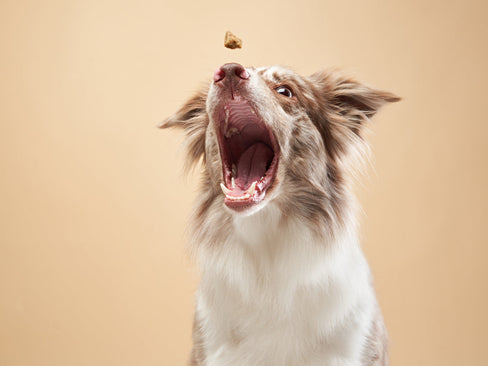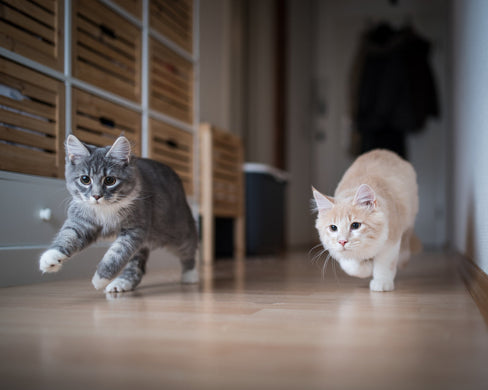Table Of Contents
No one likes seeing their beloved furry friend in pain.
They don’t run, jump, or play quite like they used to.
So if you’re here, you’re probably already aware of the pain cats can feel from joint problems and you might be asking yourself, “but what can I give my cat for joint pain?”
Good news! We’ve got all the information you need on cat joint pain relief, plus prevention tips and tricks to keep your kitty playful well into their golden years right here in this post.
Cat Joint Pain Signs
If you’re a pawrent, and you’ve had a cat in pain before, you know how hard it can be to see your kitty hurting.
But in order to help your cat feel better, you need to know what to look out for.
So what exactly should you watch for in your fluffy pal when it comes to cat joint pain?
Here are a few key symptoms to watch out for:
- Sudden aggression or sensitivity when petting
- Excessive sleeping
- Lameness or limping
- Slow to rise from resting
- Slowness (relative to usual)
- Avoiding jumps up or down
- Sudden poor hygiene
When you spot these signs, it’s time to call the vet and start considering cat joint pain relief.
Though, that’s not to say this is a comprehensive list. You know your cat better than anyone. If they start behaving strangely or doing something totally out of ordinary, it could be a sign they are in pain.
Causes of Cat Joint Pain
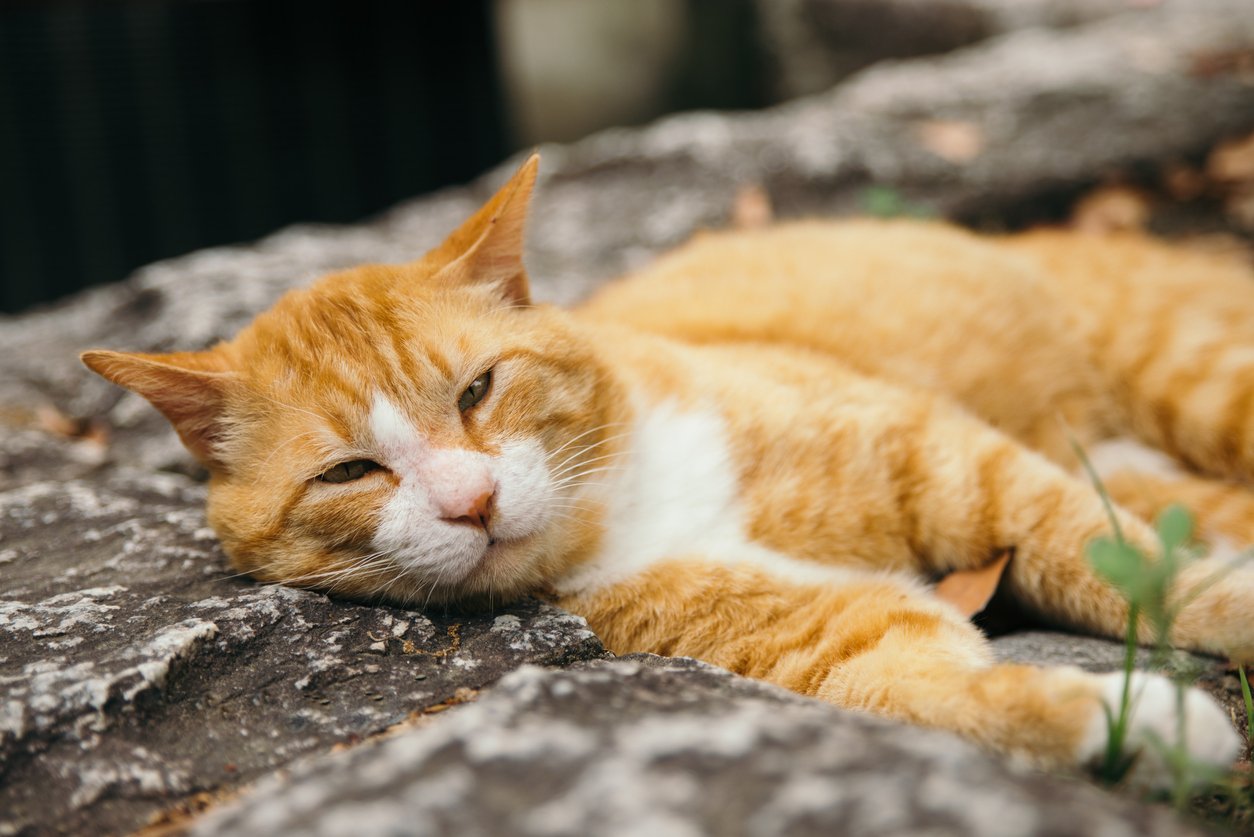
Like many conditions that have a broad-ranging group of diagnoses under them, cat joint pain can be caused by a variety of reasons.
Most commonly of all, cat joint pain is caused by arthritis.
Arthritis, also known as degenerative joint disease and osteoarthritis, is a condition commonly developed by senior pets or those who have suffered injuries. So common that 90% of cats over 12 suffer from some form of it. Arthritis pain is associated with the reduction and damage of cartilage in cat joints. Cartilage acts like a soft, cushiony barrier that prevents bones from rubbing against each other. Inflammation occurs in the joint and that equates to pain for your kitty.
The reason for all the pain and ultimately the reason cartilage is reduced can happen for a few reasons. Most commonly, it is age and natural wear and tear that causes cartilage to slowly break down and deteriorate over time.
Other times, cartilage deteriorates more rapidly because of trauma to the joint such as:
- Fracture
- Sprain
- Tear
- Ligament strain
- Broken bone
In those cases, your cat should be evaluated by a vet immediately in order to prevent further damage from happening to the joint that results in inflammation and scar tissue formation.
Finally, cat joint pain can be caused by genetic or heritable conditions such as luxating patellas or hip dysplasia. In the case of the latter, your cat’s hip joint is misaligned and loose, allowing the bones to rub together and create inflammation and pain for your kitty.
Tips for Cat Joint Pain Relief
Now that we’ve covered why exactly your kitty is suffering from joint pain, it’s time to talk about how you can do something about it, and help them feel the relief they deserve.
Avoid Home Hazards
When humans age or have mobility challenges, we give ourselves the supports and accessibility tools we need to move in a comfortable and safe fashion.
So why wouldn’t we offer our pets the same support?
By creating accessibility changes for your cat as they age, you can reduce pain and ease their daily routine. These changes could be anything from adding a low-sided litter box, to adding some ramps to your couch or bed.
Other physical modifications beneficial to cat joint pain include:
- Carpet-covered pet steps, towers or perches
- Conveniently accessed feeding bowls and litter boxes
- Orthopedic cat beds and perches
- Pet bed warmers
- Ergonomic pet feeding bowls
At the end of the day, you know your cat best. If you see they are struggling with a specific part of daily life, it’s best to talk to your vet about the right solutions for your cat’s needs.
Manage Weight
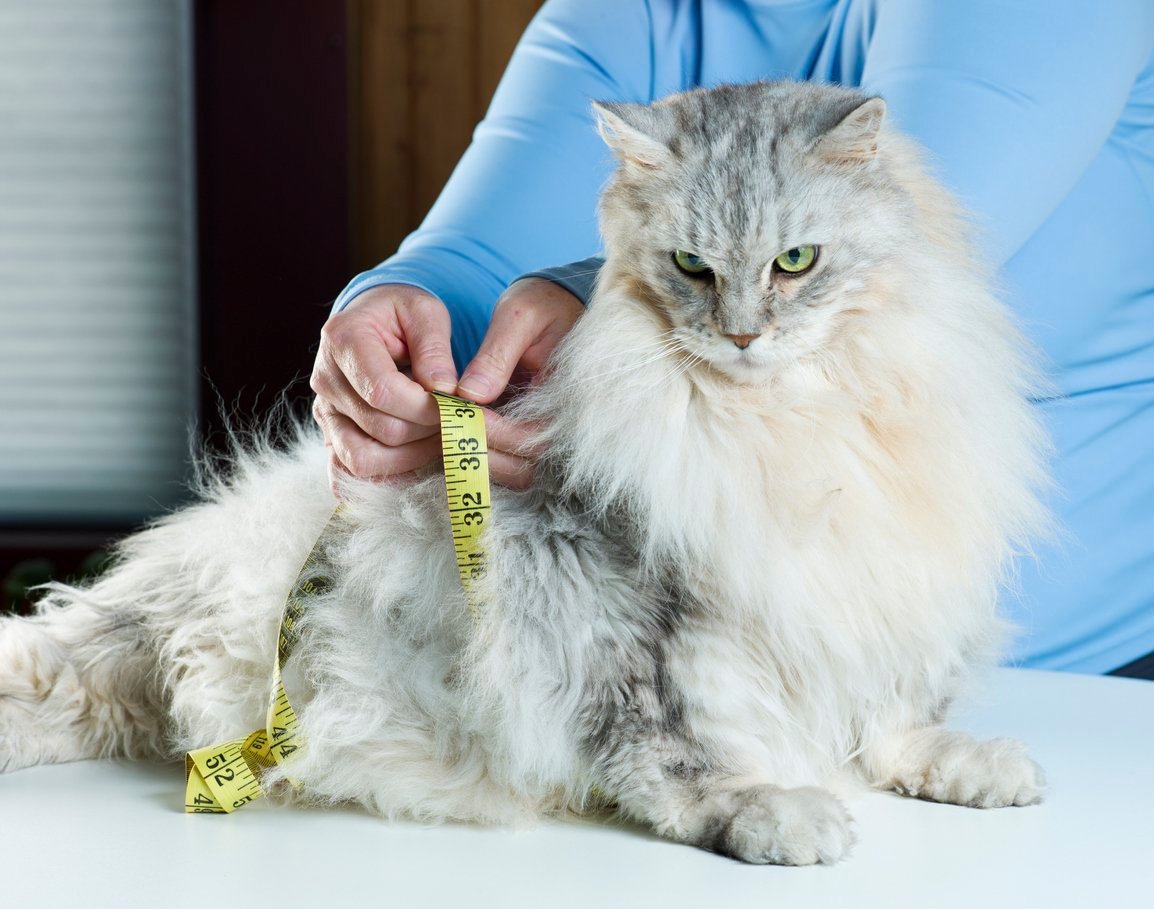
As much as we love to spoil our kitties with treats, adding extra weight to their joints can lead to cat joint pain later.
It is understood that cat joint pain is seen more often in overweight cats than in cats of normal weight. This is due to the extra stress on their weight-bearing joints caused by the excessive body weight bearing down on them constantly.
So how do you avoid those extra pounds getting your cat down?
Here are a few tips to help control weight for the reduction of joint pain:
- Ensure your cat is getting the proper amount of exercise for its age and condition.
- Offer games and toys to keep your kitty from becoming too sedentary.
- Try a wet food that is high in protein and low in carbohydrates.
- Avoid “free feeding” or allowing your cat to graze throughout the day.
- Skip the extra treats in between your cat’s meals.
By maintaining a healthy weight, your cat has a better chance at reducing cat joint pain, as well as avoiding a slew of other paw-ful conditions associated with obesity.
Add a Cat Joint Supplement
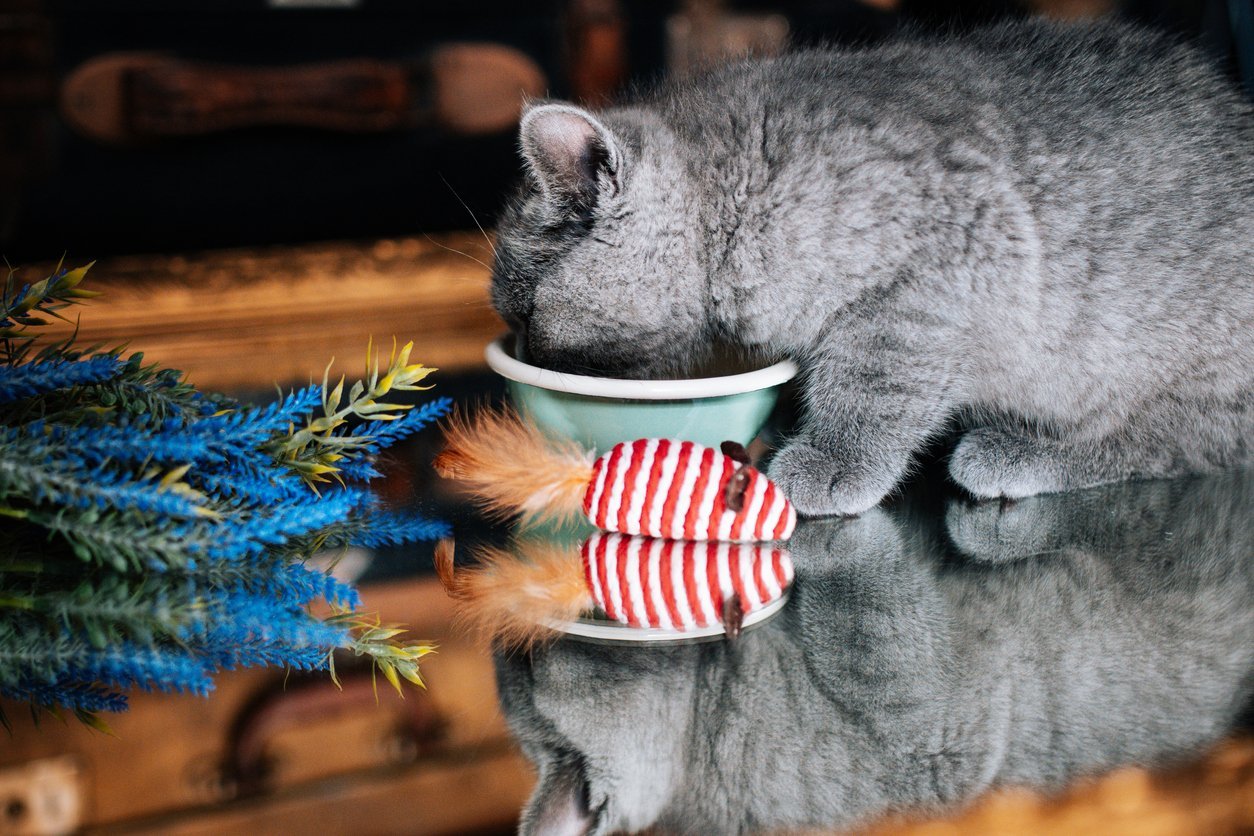
When it comes to relieving pain for your cat, you’re going to want to have as many tools in your back pocket as possible. And one thing you can use in conjunction with the other ideas shared in this post is adding cat joint pain supplements to your kitty’s daily routine.
Joint pain comes from the inflammation caused by the bones in your cat’s joints rubbing together due to a lack of cartilage. So it would only make sense that we should tackle the problem at the source by reducing inflammation and repairing cartilage.
But what has the power to do that for your sweet feline?
You might have guessed it, but cat joint pain supplements have the right ingredients to do just that!
Adding a supplement like Integricare’s TRI-ACTA can help your cat get key benefits in a matter of weeks! Our extra-strength formula, TRI-ACTA H.A., offers your cat a therapeutic dose of key joint health ingredients like glucosamine, chondroitin, and MSM, plus the addition of hyaluronic acid for maximum joint health support.
Each ingredient has a key role to play and will help reduce cat joint pain for your feline friend:
- Glucosamine repairs cartilage in the joints.
- Chondroitin stops the breakdown of cartilage before it starts.
- MSM minimizes pain and inflammation in the joints due to its antioxidant properties.
- Hyaluronic Acid lubricates joints by improving synovial fluid for greater mobility.
By offering your cat all of this in one easy to serve dose daily, you can help reduce pain and inflammation now, and improve their quality of life as they age or recover from an injury.
TRI-ACTA H.A. for Pets
Our maximum strength formula is optimally designed to accelerate the formation of cartilage, minimize inflammation, expedite the healing process, and improve joint conditions.
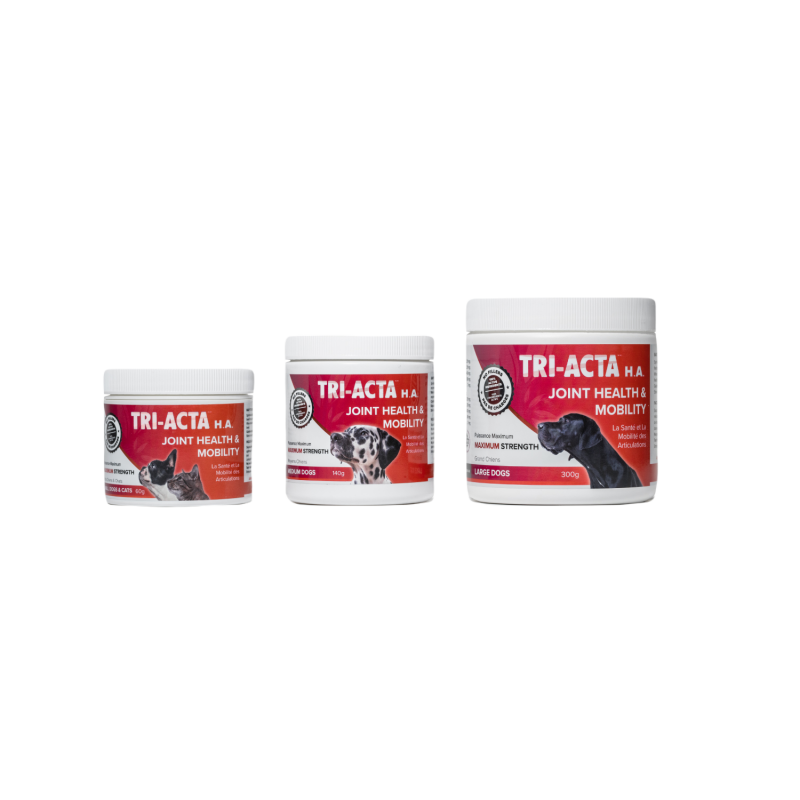
Cat Joint Pain Medication

If you need a more extreme form of relief from their pain, talk to your vet about cat joint pain medication.
While it may not be a great long-term solution (hello, side effects) it can help get your cat feeling more like their old selves again fairly quickly.
The most commonly used cat joint pain medication for cats are NSAIDs or non-steroidal anti-inflammatory drugs.
These drugs are closely regulated and must be acquired by prescription from your vet. Never feed your kitty human NSAIDs or other over-the-counter medications. They are not designed for cat bodies to safely digest and metabolize.
Commonly prescribed options for cat joint pain medication include:
- Meloxicam
- Robenacoxib
Whichever option your vet decides is best for your cat’s particular needs, you want to be aware of the potential for side effects your kitty may experience, especially with long-term use.
Side effects can include:
- Little to no appetite
- Vomiting
- Increased or noticeable lethargy
- Diarrhea
When you spot a symptom as listed above, immediately discontinue the use of the NSAID and call your veterinarian.
Explore Alternative Therapies
When you’re seeking cat joint pain relief for your feline friend, it’s important to consider a variety of options and create a treatment plan with your vet that includes the right modalities.
One thing that might be a helpful addition to your cat joint pain relief plan is the use of alternative therapies, including physical therapy, to help exercise and massage joints safely.
Just like us, our cats can spend an afternoon at the spa-w getting pampered with feline massage!
Therapeutic massage can help alleviate some of the pain associated with joint aches, as well as improve circulation for your kitty’s body overall.
Other alternative therapies for cat joint pain relief include hydrotherapy and laser therapy. Laser therapy relies on penetrating light being applied precisely to stimulate your cat’s natural self-healing ability.
Hydrotherapy, on the other hand, is all about getting your cat in the water. And while water plus cats may not sound like a recipe for success, using warm water pools to allow your cat to get some exercise and alleviate pressure on their joints is a great way to build muscle and help them feel some pain relief.
Tips for Cat Joint Pain Prevention

Preventing our cats from feeling pain before it happens is something all cat owners strive for, so let’s get into how you can help prevent cat joint pain from taking over.
Visit the Vet Annually
Did you know that a recent study found that just over 27% of cat owners only visit a vet when their cat is sick? That’s a lot of kitties missing out on preventative care!
As much as your cat may be loath to go to the vet, a regular annual checkup can help spot problems before they fully take hold. This is definitely true when it comes to cat joint pain. Sharing changes in behaviour or activity levels, plus a good inspection from your vet can save a lot of pain later.
Particularly for older cats, a visit to the vet can include screening and diagnostic testing to check for degenerative diseases like arthritis. This can be the culprit behind a lot of cat joint pain.
So when do you need to take your cat to the vet, and how often?
Here are a few guidelines to follow:
- Regular checkups should be every year at a minimum.
- If you notice changes in your cat, physically or behaviorally, call and book a visit.
- Falls, tumbles, or other injuries should be followed up with at the vet.
- For senior cats, a biannual visit may be more appropriate.
- When in doubt, call your vet to ask about visit frequency based on your cat’s unique health and medical history.
Promote Regular Exercise
Cats aren’t exactly known for their willingness to exercise. In fact, they may be better known for their laziness than anything else!
But that doesn’t mean they don’t need to exercise.
Cats are recommended to exercise for at least 30 minutes a day. While that may not sound easy if you have a kitty who loves naps more than walks, it’s important regardless. Exercise is key to maintaining strong muscles as well as keeping joints mobile, plus it will help keep those extra pounds off your cat’s joints, too.
In the table below, we have outlined some ideas you might find helpful for getting your kitty motivated to get moving are outlined below.
| Cat Exercise | Tools and Equipment |
| Active Play |
|
| Outdoor Walks |
|
| Nature Watching |
|
| Scavenger Hunt |
|
Provide a Balanced Nutrition
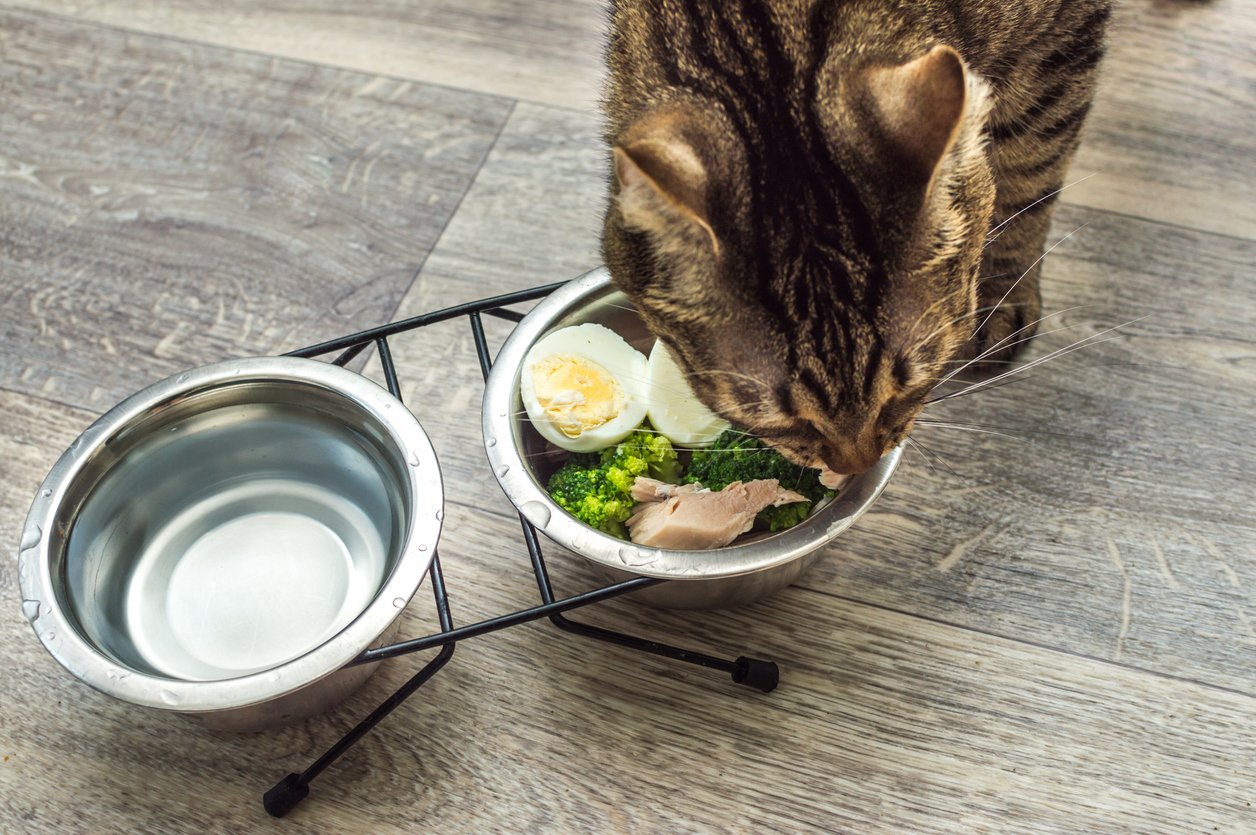
A balanced diet is a key to better fur, bones, skin, teeth, and digestive health as well as to a healthy weight.
Cats have unique nutritional needs. They must have the right balance of nutrients in their diet in order to maintain good overall health. And since their health is affected by a variety of factors, including your cat’s weight, age, genetics, and bone health, you’re going to want to keep a close eye on what they’re eating for more than one reason.
But how are you supposed to know what your cat needs in their diet? The answer is going to be doing some research, but lucky for you, we’ve compiled all the information you need right here!
The table below outlines the key components of a cat’s diet for good overall health.
| Component of Cat Diet | Why It’s Important |
| Arginine |
|
| Taurine |
|
| Vitamin A |
|
| Vitamin D |
|
| Calcium |
|
| Niacin |
|
| Phosphorus |
|
| Magnesium |
|
If you are worried about your kitty missing out on one or more of these components, adding a supplement designed for cats is a great way to balance their diet, get them any missing nutrients they may need, and further foster joint health and mobility.
Incorporate Cat Joint Pain Supplements
Building a healthier cat starts from the inside, but you probably already knew that.
You feed your cat the best food, give them plenty of exercise, and make sure they get to the vet when needed. A cat joint pain supplement is a simple, easy-to-administer health boost that can be added to your daily routine with ease.
We talked about how joint supplements can reduce pain earlier, but they are also great at helping prevent it in the first place, too!
For young and healthy cats, TRI-ACTA is the perfect way to support their joint health from an early age.
It contains three powerful joint health ingredients we mentioned above:
- Glucosamine
- MSM
- Chondroitin
This combination of ingredients offers protection from cartilage breakdown, reduced inflammation, and cartilage repair, so you look for them when reading a supplement label at the store or online.
Something else you should consider when trying to find a cat joint supplement is how much of the formula is active ingredients, and how much is filler. The less filler, the more therapeutic the dose is, and the less you have to serve your kitty. Also, finding a supplement that you know you can trust is really important. Consider how long the company has been making the product, and if they specialize in pet supplements. You can also look for a cat joint supplement that has been third-party lab tested for quality and efficacy. That way you can be sure your cat is getting the quality they deserve.
It can be a tall order to get all of that packed into one, easy-to-administer supplement, but TRI-ACTA meets these qualifications and more. You’ll only have to sprinkle a small amount of the supplement over your kitty’s daily meals to get a high-quality, therapeutic dose of joint care.
Avoid Situational Injuries
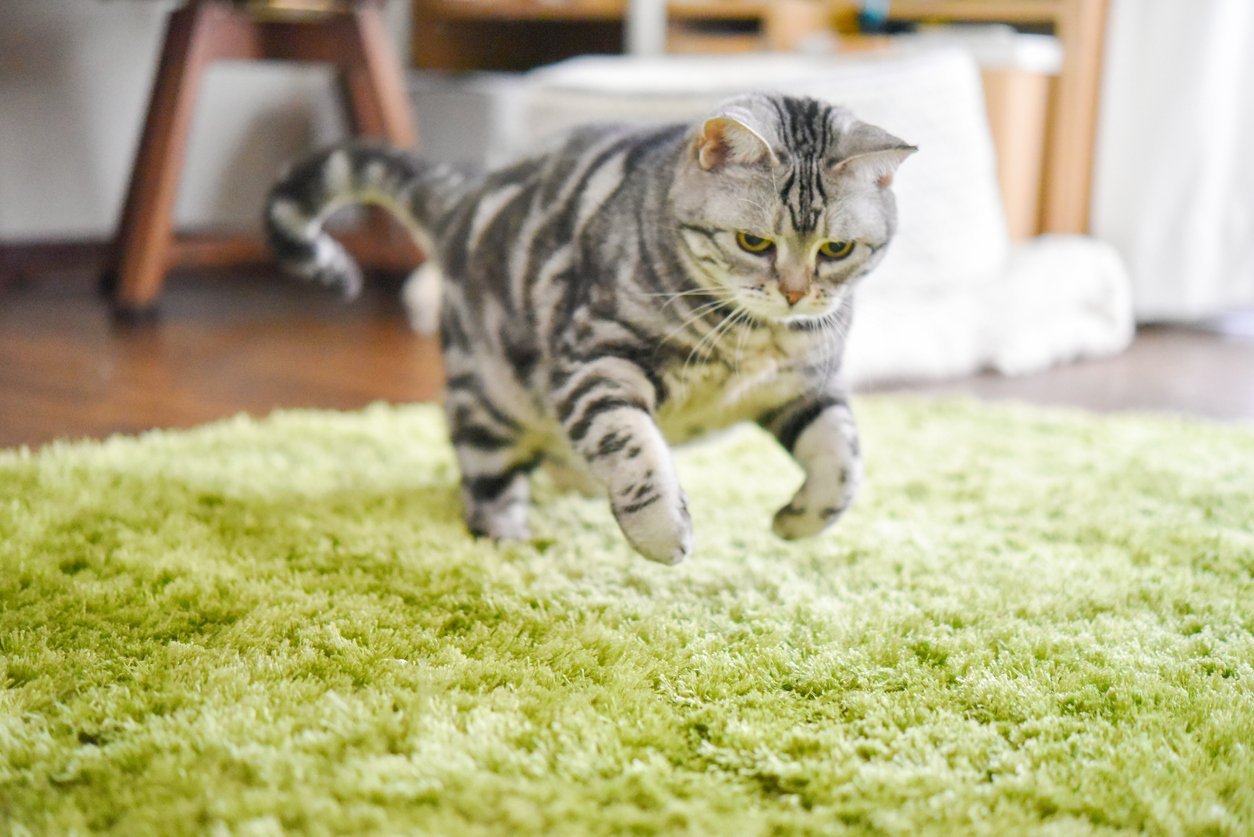
That old saying, “curiosity killed the cat” exists for a reason.
Our feline friends are known for being inquisitive and downright sneaky! They love to climb, explore, and make daring leaps. Unfortunately, those adventures commonly lead to injuries. So common, in fact, that vets have a name for it — feline high-rise syndrome.
The best way to avoid cat joint pain from an injury is to prevent it in the first place. Cats are naturally curious and love to jump from ledge to ledge, checking out the world outside, so in warmer climates and months, be aware of open windows and doors to the outside. You should also avoid allowing them unsupervised access to your decks, balconies or fire escapes, as they can lose balance or fall asleep precariously, slipping through a railing or off the edge. Always keep a close eye on your beloved kitty near heights, and consider purchasing a specially designed cat tower to pique their curiosity more safely.
3 Cat Joint Pain Treatment Options
This post wouldn’t be complete without the information you need to know about treating cat joint pain, so let’s get to that next.
Cat Joint Pain Medication
When humans are in pain, one of the first things we reach for is over-the-counter pain medications.
And for good reason! These medications are designed to combat inflammation and reduce pain.
The same goes for your cat — sort of.
We mentioned them earlier, but it’s worth noting that there are two kinds of NSAIDs, or non-steroidal anti-inflammatory drugs, available for cats by prescription from your vet. You should never feed your cat human medications as their systems are not designed to process them safely and can lead to severe consequences like renal failure or death.
NSAIDs offer your cat ease of movement, better appetite, and reduced pain in a timely fashion. There are also other cat joint pain medications like corticosteroids and opiates, though NSAIDs are often prescribed for short-term pain management most frequently.
Typically, these medications will be an oral preparation that should be fed alongside food to ensure the drug is digested properly. Often, it is recommended to serve it alongside or in wet food to encourage your feline pal to drink plenty of fluids and remain hydrated.
When it comes to medication, cats are extremely sensitive to many ingredients that may not bother you or other household pets. If you are in doubt about side effects or dosage after receiving a prescription, contact your vet or consider a supplement as a starting point.
Injectable Prescription Joint Medications
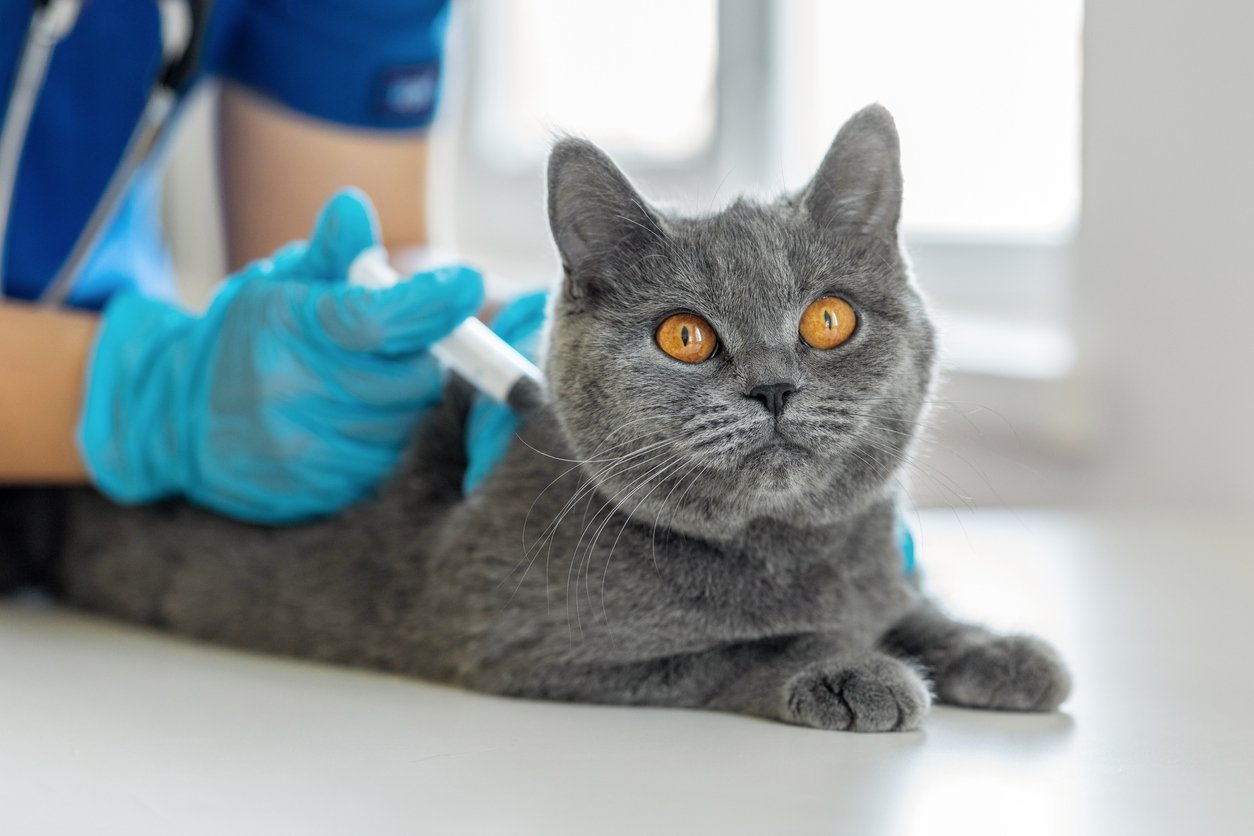
Targeting problems at the source is always a great solution.
Injectable prescription joint medications do just that. They focus on specific joints that are most affected by cat joint pain. Medications like this are injected under the skin or intramuscularly and have properties that focus on promoting cartilage growth and maintenance as well as improving joint fluid production and blood flow.
Your vet will determine what is best for your cat, but the two most common injectable cat joint pain medication options are outlined in the table below.
| Injectable Joint Medication | Dosage | How it Works |
| Pentosan Polysulphate | One injection every 5 to 7 days, for a total of 4 weeks plus boosters if needed | Injection under the skin |
| Polysulphated Glycosaminoglycan | One injection every 3 to 5 days for a maximum of 4 weeks, with boosters given as needed | Injection into muscles or under skin |
Supplements for Cat Joint Pain
We’ve been singing the praises of cat joint pain supplements throughout this post, and for good reason.
Plain and simple, supplements offer your cat relief now and help build better joints for the future.
They can solve the problems joint disease creates — lack of synovial fluid, cartilage breakdown, and inflammation and help rebuild cartilage that has already deteriorated.
Specifically, using a cat joint pain supplement that contains hyaluronic acid can help senior kitties or those who struggle with joint pain get mobility back. Hyaluronic acid helps create synovial fluid, a key component in cushioning the space between bones in joints. When our cat’s age, they lose the viscosity of the synovial fluid and adding a supplement like TRI-ACTA H.A. can help replenish it and make your cat more mobile and comfortable.
Best Supplements for Cat Joint Pain
1. TRI-ACTA and TRI-ACTA H.A. for Pets
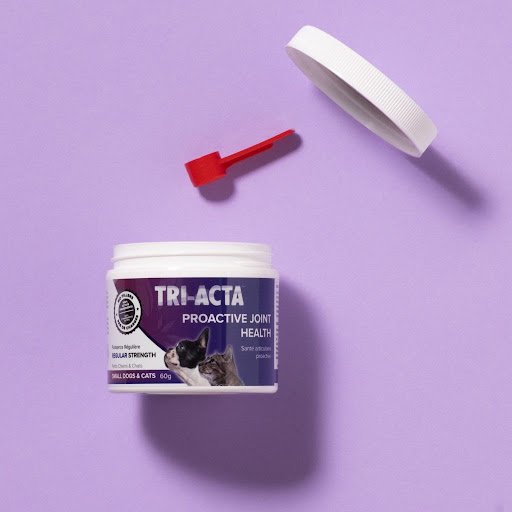
We couldn’t make a list of the best cat joint supplements without including our own TRI-ACTA for pets.
Offered in an easy to serve powder format, you can make sure your cat is getting a pure, therapeutic dose of joint health components in a small serving size. You can even feed it to your pups, too!
TRI-ACTA contains the following key ingredients to help improve your cat’s joint health:
- Glucosamine (two forms for maximum effectiveness)
- Chondroitin
- MSM
And if your pet is already suffering from cat joint pain, our TRI-ACTA H.A. contains hyaluronic acid to help improve joint lubrication and mobility.
Plus, Integricare’s products are tested in a third-party lab to make sure only the highest quality ingredients are packed into every serving, and we have been helping pets and horses feel their best with joint supplements for over 20 years.
You can also trust the safety and efficacy of our products as they are approved through Health Canada’s Veterinary Health Product program.
* TRI-ACTA Priced $23.99 – $64.99 CAD, TRI-ACTA H.A. Priced $27.99 – $79.99 CAD as of January 2022
2. Omega Alpha Glucosapet
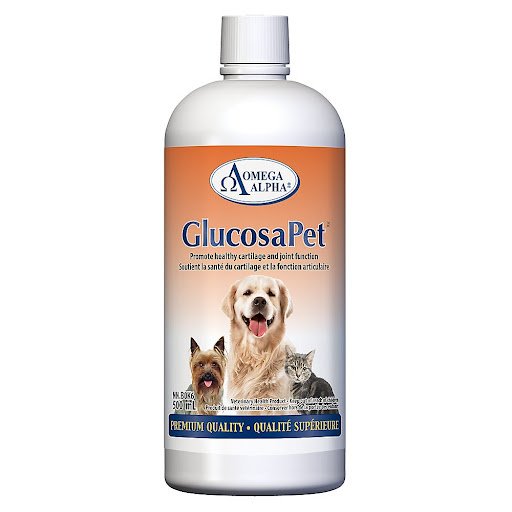
Another option to consider for cat joint pain is Omega Alpha’s Glucosapet.
This option comes in a liquid format and features the powerful joint health superheroes we like to see (glucosamine, MSM, and chondroitin) in its formula alongside other helpful ingredients such as siler root and devil’s claw root.
One drawback is that this formula definitely contains a few fillers that we could do without, and you’ll have to get your kitty to take a rather large dose. While it won’t bother some cats to take a larger dose, if you have a picky feline on your hands, you may want to consider other options.
* Priced $7.99 – $26.99 CAD as of January 2022
Start Preventing Cat Joint Pain
With all this information in your back pocket, you have the power to start preventing and treating cat joint pain.
And you know what will help with both? Add a cat joint pain supplement to your cat’s diet.
By helping repair and prevent the breakdown of cartilage, as well as reducing inflammation at the source, cat joint pain supplements can be a simple way to reduce the pain your kitty may feel as they age or face an injury to their joints.
And you already know the best option on the market — Integricare’s TRI-ACTA for pets. With over two decades of experience under our belts, we have high-quality, effective products that are easy to serve and offer the important benefits of glucosamine, chondroitin, MSM and even hyaluronic acid in our maximum strength product.
If you’ve still got questions about our TRI-ACTA and TRI-ACTA H.A., you can always contact us, and we’ll answer them as best we can.

